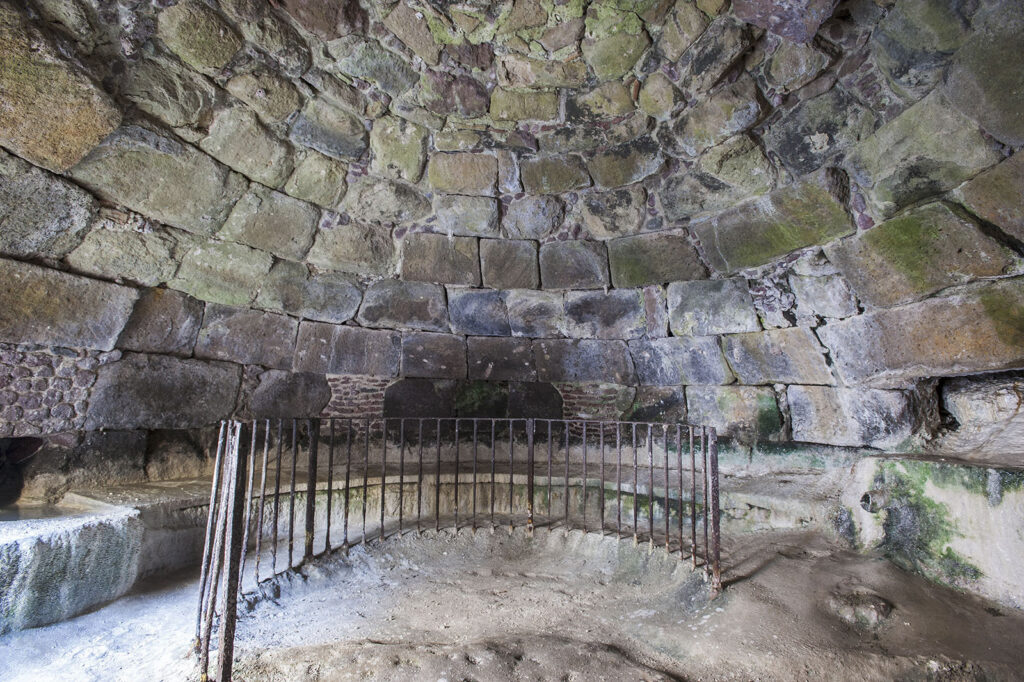The thermal springs of the island of Lipari are remembered by writers from Greek and Roman times (Aristotle, Diodorus, Strabo, Athenaeum and Pliny) and were so famous that one of the minor thermal baths of Rome bore the name of Aeolia.
 “ In the island of Lipara they say that there is a place with a down draught, in which if they hide a pipkin, anything they put into it boils” (Aristotle, De mirabilibus auscultationibus 34).
“ In the island of Lipara they say that there is a place with a down draught, in which if they hide a pipkin, anything they put into it boils” (Aristotle, De mirabilibus auscultationibus 34).
It is very likely that the literary quotation refers to the thermal spring of
Saint Calogerus
(San Calogero) on the western side of the island, whose original pseudo-dome structure is compared to the
beehive tombs
of Mycenaean Greece, dating back to between the 16th and 14th centuries BC, such as the well-known “Treasury of Atreus”.
Inside the furnace of San Calogero, prehistoric Bronze Age ceramics were found which were widespread in the Aeolian Islands at a time when trade and economic relations between the Aeolian Islands and the Mycenaean world were already well established.
The building was not built on the hot spring that was further upstream, but a few dozen metres away, so water was brought into the furnace through channels. It is the oldest existing spa building and remained so throughout the Greek, Roman and Byzantine periods and until the 19th century through various renovations and reconstructions.
The temperature of the water from the San Calogero thermal baths varies between 34 and 40 °C. These values are attributable to a classic hydrothermal phenomenon, typical of volcanic areas, which effectively shows that even the Lipari magmatic system cannot be considered extinct.
On the contrary, the fact that the last eruption on the island dates back to “only” 800 years ago, combined with this hydro-thermal activity – widespread along the entire north-western coast of the island – shows that there is a dormant but active volcanic system in Lipari.